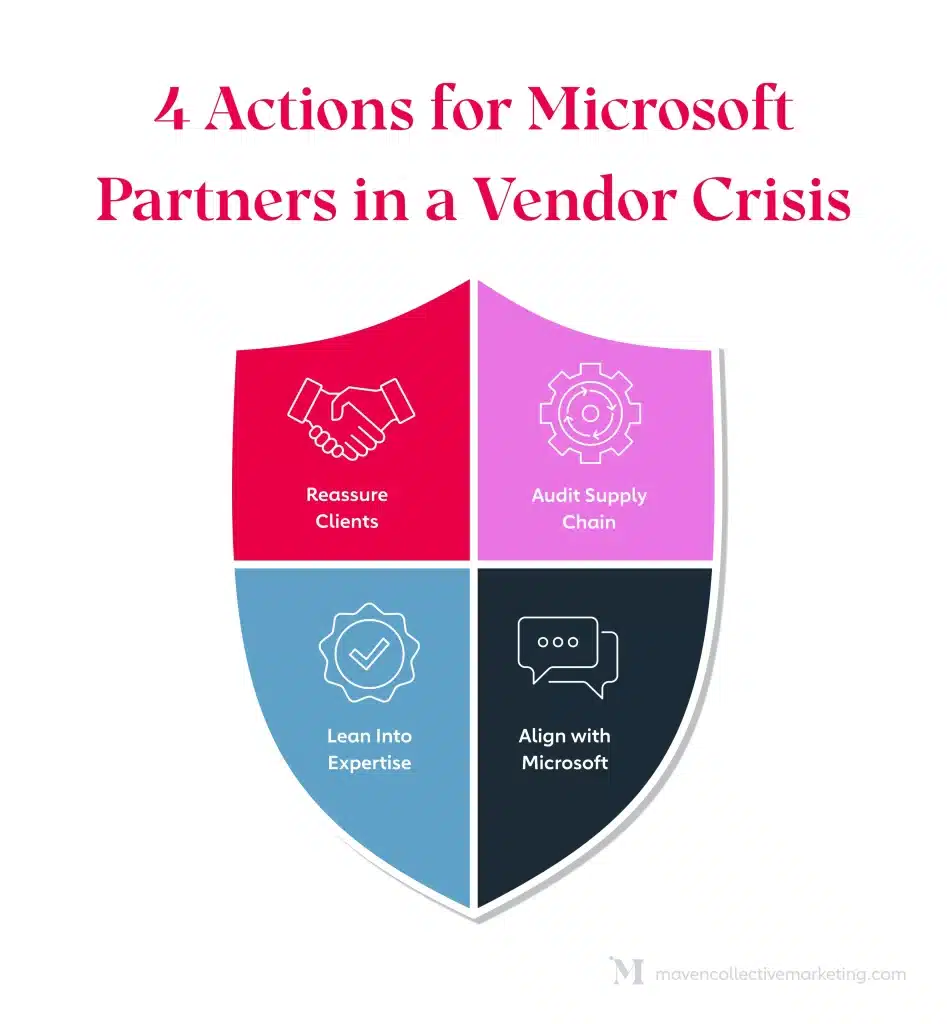What Microsoft Partners Can Learn from the Ingram Micro Ransomware Attack
Estimated Reading Time: 3 minutes
Intended Audience: Microsoft Partners
What Caused the Ingram Micro Ransomware Attack?
The Ingram Micro ransomware attack was reportedly carried out by the SafePay ransomware group. The attack exploited vulnerabilities in Ingram Micro’s GlobalProtect VPN platform, allowing prolonged access to internal systems. Due to network misconfigurations, the group was able to exfiltrate sensitive data, including financial records, customer files, and legal documents.
The breach shows how even well-resourced organizations can fall victim to sophisticated cybercriminal tactics when gaps in system configuration and monitoring exist.
Why Does This Matter to Microsoft Partners?
Your clients are watching the Ingram Micro ransomware attack unfold, and they’re asking the tough questions:
- Could this happen to us?
- How prepared is our Microsoft Partner to handle such a crisis?
This is your moment to lead. Beyond providing technical solutions, you must demonstrate strategic foresight, proactive risk management, and a calm, effective communication approach. Your response to high-profile breaches like this one can help clients see you as a reliable advisor and partner in times of uncertainty.
What Should Microsoft Partners Do During a Vendor Crisis Like the Ingram Micro Ransomware Attack?
Here are four key actions you can take to build customer confidence and position your business as a trusted cybersecurity leader:
1. Reassure Your Clients
Even if your clients are not directly affected, they need to know you are actively engaged. A timely, calm message can go a long way in reinforcing trust. Let them know you’re monitoring the situation, evaluating potential impacts, and that you have contingency and response plans in place.
2. Audit Your Supply Chain Dependencies
A ransomware attack can expose critical third-party vulnerabilities. Act now to review your supply chain and service dependencies. Where do your products and services rely on third-party providers like Ingram Micro? What mitigation plans are in place? Communicate that you are thinking ahead and acting to protect their business.
3. Lean Into Your Expertise
4. Align with Microsoft’s Security Priorities
Microsoft’s security focus is only intensifying. Their investment in Zero Trust and secure-by-design cloud solutions is setting a new standard. Update your marketing and client messaging to reflect how your services align with Microsoft’s evolving priorities.

How to Communicate with Clients During a Ransomware Crisis
How you communicate in the midst of a crisis can make or break trust. Whether or not your services are impacted, clients want to feel informed, reassured, and supported. Use these communication best practices:
- Be Proactive: Don’t wait for clients to reach out. Take the initiative and keep them updated as the situation unfolds.
- Be Transparent: Share what you know about the Ingram Micro ransomware attack, any direct or indirect implications, and the steps you’re taking to assess and respond.
- Be Human: Empathy matters. Acknowledge client concerns in a clear and caring way. Avoid technical jargon that may confuse or frustrate your audience.
What Are Microsoft’s Current Security Priorities Post-Ransomware Attacks?
1. Zero Trust Architecture
Microsoft’s Zero Trust model is based on the principle: never trust, always verify. It involves:
- Verifying identity and access at every point
- Applying least-privilege access principles
- Continuously monitoring for unusual behavior
Partner opportunity: Emphasize how your offerings help clients enforce Zero Trust practices through endpoint protection, identity management, and access controls.
2. Secure-by-Design Cloud Solutions
Security must be integrated from day one, not bolted on after deployment. Microsoft is embedding security into:
- Application development (DevSecOps)
- Cloud infrastructure
- Threat response workflows
Partner opportunity: Highlight how your solutions proactively reduce risk through secure development practices, infrastructure hardening, and automation.
3. Threat Intelligence & Response Readiness
Microsoft’s Threat Intelligence Center (MSTIC) plays a critical role in detecting and neutralizing threats before they escalate. Their tools include:
- Real-time anomaly detection
- AI-driven threat analytics
- Advanced Threat Protection (ATP) via Microsoft Defender, Sentinel, and MDR
Partner opportunity: Incorporate these tools into your service stack and position your firm as a response-ready expert.
4. Partner Co-Sell Security Alignment
- Messaging that reflects Microsoft’s security values
- Technical integration with Microsoft 365, Azure Security, and Purview compliance tools
- Participation in Microsoft’s security Partner programs




